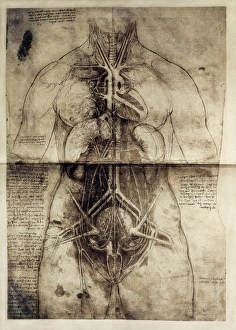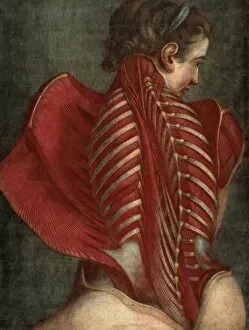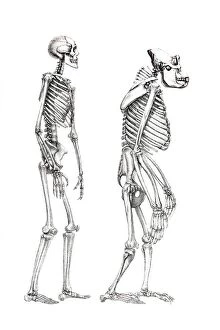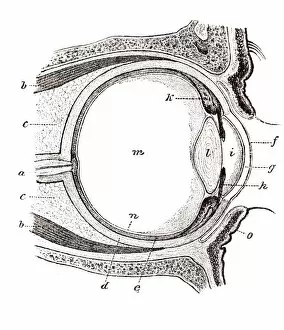Anatomic Collection
"Exploring the Depths of Anatomic Knowledge: From Leonardo da Vinci to Modern Medicine" Step into the anatomic studio of Leonardo da Vinci
All Professionally Made to Order for Quick Shipping
"Exploring the Depths of Anatomic Knowledge: From Leonardo da Vinci to Modern Medicine" Step into the anatomic studio of Leonardo da Vinci, where he meticulously studied and sketched the human body. His groundbreaking work paved the way for future anatomists like Bartolomeo Eustachio, who furthered our understanding of this intricate system. One area that has captivated scientists throughout history is the heart. Its rhythmic beats have inspired countless researchers, including Theodor Schwann, a German physiologist known for his contributions to cardiovascular science. Andrea Vesalio's masterpiece "De humani corporis fabrica" stands as a testament to his dedication in unraveling the mysteries of anatomy. This comprehensive work became a cornerstone in medical education and continues to be revered today. Jacques-Fabien Gautier Dagoty's painting "L'Ange anatomique" takes us back to 18th-century France, depicting a dissection of a woman's back. This historical artwork serves as a reminder of how far we've come in our understanding and appreciation of anatomy. The value placed on anatomical knowledge cannot be overstated. Jean-Jacques Manget's "Bibliotheca" showcases the importance of preserving and disseminating these valuable texts throughout history. Mathieu I. Van Bree's portrait captures Georges Cuvier, one of the founding fathers of comparative anatomy. His pioneering research laid the foundation for modern zoology and revolutionized our understanding of animal structure. From ancient times to present-day advancements, medicine and anatomy continue their intertwined journey towards unlocking life's secrets. Each discovery brings us closer to comprehending our own bodies while fueling new breakthroughs that benefit humanity as a whole.




















